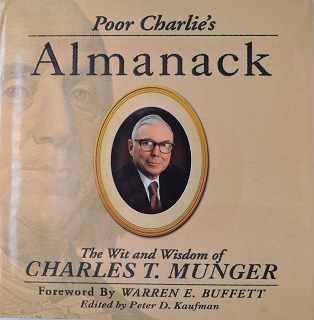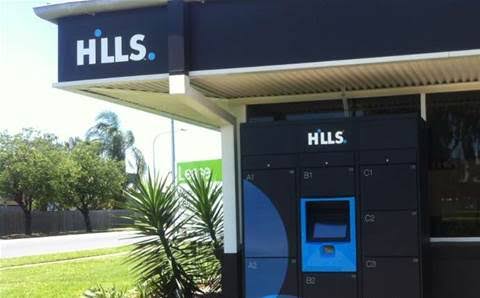
Most social scientists share the view that the GFC in 2008/09 played a major role in further polarising modern day societies.
To get an accurate insight into what is happening in the economies around us, we now need to separate the top 1%, while also acknowledging there are major differences between Haves and Have Nots, as well as in between generations and genders.
What is not as often acknowledged or highlighted is that, post-GFC, a similar polarisation has manifested itself in share markets.
When viewed through this prism, a far better understanding of the many waves and movements can be obtained, yet most commentators and experts continue referring to “the market” as if it still were one cohesive bundle of Australian companies reflecting the health and direction of the Australian and the global economy, as well as representing sentiment and investor views about it.
I guess it’s way too difficult for mainstream media to explain to their less-familiar audience why shares in CommBank (ASX:CBA), BHP Billiton (ASX:BHP), CSL (ASX:CSL) and Goodman Group (ASX:GMG) are rather seldom moving in synchronicity these days.
But the industry itself is equally guilty. Apart from not taking on the task too difficult (as it requires extra explanation), many professionals are, above anything, bottom-up stock pickers.
Most importantly, this extreme post-GFC polarisation is still quite young, in the bigger scheme of things, and all humans are creatures of habit and loyal servants of history, the long haul. We carry a built-in resistance to change.
Yet, share markets have changed, and quite dramatically so. In the US, the leading indicator for so many things, the pendulum swung in favour of what today is casually been referred to as Big Tech shortly after the recovery out of the GFC.
The Australian share market only caught up post the euro-crisis of 2011/12, with the emerging schism only gradually revealing itself. It still took a few years before the gap in investor enthusiasm started showing up in market research and on performance tables.
By now, one would hope, we are all too familiar with CSL, Goodman Group, Charter Hall (ASX:CHC) and Afterpay (ASX:APT) having separated from old economy-stalwarts like Scentre Group (ASX:SCG), Lendlease (ASX:LLC), Bank of Queensland (ASX:BOQ) and Ardent Leisure (ASX:ALG).
The gap in performance between these two opposite groups of companies has been nothing short of phenomenal in recent years, which easily explains why so many investors, both professional and retail, have found it impossible to keep up.
No bigger sin has been committed in the share market than through the accumulation of cheap looking stocks that subsequently revealed themselves as perennial underperformers, if not a true-blue value trap.
The difficulty with investing is that none of this ever moves in a straight line. There are times when Lendlease does beat CSL and when the rally in Ardent Leisure shares leaves most others in the dust, but bigger picture, the strong have shown their strength whereas the weak and vulnerable could not.
I do realise, most Australian investors do not easily accept terms like “weak” and “lower quality” when the conversation turns to long-held favourite Blue Chips like banks, insurers and major property owners, but that’s what automatically comes to mind when viewing the share market through the prism of Haves and Have Nots.
And investment returns from the post-2012 era have supported this assessment.
There are multiple reasons as to why the gap between Winners and Losers in the share market has opened up and continued to widen.
There is the ascendancy of new technologies combined with demographic shifts, on top of extremely low interest rates and shorter business cycles that require regular propping up through central bank stimulus.
These tectonic forces are by now so deeply embedded into today’s societies, not even the one in a hundred years covid-19 pandemic has been able to close the gap in the share market.
This is the one remarkable observation that simply needs to be highlighted: history shows this type of deep economic shock combined with a Bear Market period for equities usually breaks the trends that were prevailing prior.
In other words: these events are the trend-breakers that reverse Winners into Laggards and turn Losers into Winners. Such trend reversals were all too obvious post the Nasdaq crashing in 2000 as well as post-GFC.
But not this time.
This time the gap between the two opposing baskets of stocks in the share market has simply widened even further.
This may be hard to swallow for investors whose attention is focused on banks, QBE Insurance (ASX:QBE), Telstra (ASX:TLS), Unibail Rodamco Westfield (ASX:URW), and the like but Ansell (ASX:ANN) is today trading near an all-time record high.
So is Afterpay. And NextDC (ASX:NXT). And Objective Corp (ASX:OCL), plus many others.
Admittedly, the gap between both poles in the share market is not solely due to differences in operational health and business performances; investor sentiment plays its part as well.
But positive sentiment is only adding to the differences in growth trajectories. It cannot be blamed for all the wrong reasons.
Dividing the share market in two opposing baskets of stocks can be quite illuminating, with different observations leading to different conclusions from what quickly becomes common perception.
At face value, it seems like investors decided after March 23rd shares had been weakened to the extreme and value was up for grabs for the brave and those who held their nerves when many others weren’t.
In reality, however, most funds flowed into the top performing basket that holds companies that were not affected by lockdowns or the pandemic, or whose longer-term growth trajectory would only suffer a mere blip.
Investors can easily check this. Open up a price chart of, say, CSL and everybody can see it mirrors the recovery in the ASX200 from late March and into April.
This is why I haven’t been worried about share markets revisiting the March low anytime soon. The sharp recovery has very little to do with ignorant or overly optimistic investors, but everything with the smart money jumping on the most secure and conservative options available.
Similar observations can be made about US equities.
Market updates by CSL, and others, since have proven these buyers correct. CSL shares near $260 (and lower) were an absolute steal. And so was ResMed (ASX:RMD) below $20. And Cochlear (ASX:COH) at $140 (though that one has been more controversial).
Investors also quickly decided high quality technology Winners including Afterpay, Altium (ASX:ALU), Appen (ASX:APX) and Xero (ASX:XRO) might still be impacted, somewhat, but it won’t derail their longer-term growth potential. These share prices were thus equally quick to recover.
It pays to take a brief pause and reflect on what factually happened in the month after March 23. Investors were not adopting an optimistic view about what might happen with economies and businesses hit by lockdowns and the pandemic – in reality they did the exact opposite.
It’s not a view you might encounter when reading through the many analyses and share market commentaries by experts who take guidance from broad indices or technical price charts.
The irony here is the broadly carried (misguided) perception of markets being “bullish” and “positive” has since carried over into the opposing basket of share market laggards, allowing many more stocks to join in with a noticeable recovery.
In terms of further share market upside, the secondary impact to date has been rather benign, less than 100 points for the ASX200 compared with the three peaks registered in April.
This is equally an important observation that deserves to be highlighted: amidst a general perception that equity markets are on a continuous winning streak, some are even talking about a new bull market, leading indices in Australia have hardly made any real gains over the past month.
This market is essentially trotting sideways. Admittedly, underneath the surface there is more movement than the human eye can possibly register with share prices swinging up and down on a daily basis.
Bigger picture, it is only now that investors are starting to move higher up the risk scale by buying into less secure and more operationally challenged, cheaper priced stocks that will ultimately require a more positive outcome once the lockdowns are finished.
It seems but logical to conclude that from here onwards the share market will become more vulnerable to less optimistic outcomes, and thus to pull backs, or worse.
This is now also the view of US equity strategists at Citi whose proprietary Panic/Euphoria indicator is currently placing investor sentiment in Euphoria territory, and rising, lifting the odds for a general share market pullback to 70% over the next twelve months.
Citi’s modeling of investor sentiment uses a series of indicators including US margin debt data, investor sentiment surveys, retail money flows, the put/call ratio and the price of gasoline in the US.
This indicator has built up a relatively high percentage of accuracy when its signal moves in either of the two extremes.
This is one reason as to why I pay attention. The second reason is the conclusion drawn by Citi’s indicator corroborates my own analysis.
Investors worried should note the Euphoria status of investor sentiment is to date the only factor that troubles Citi strategists. They have no problem with where share markets are, and neither with valuations or earnings forecasts.
Whenever share markets arrive at the cross-roads, as they have since mid-April, investors start frantically searching for the next big opportunity.
This is when having performed well during the early recovery phase can turn into a temporary disadvantage. The quick money will leave and seek higher returns elsewhere.
And so it is that share prices of supermarket owners Woolworths (ASX:WOW) and Coles (ASX:COL), of super-performer a2 Milk (ASX:A2M) and of healthcare sector leaders CSL and ResMed have trended lower recently.
This is not the share market indicating bad news is coming up next. This is merely the result of investors (potentially) seeing more profitable opportunities elsewhere.
Understanding where the next opportunities are begins with understanding one’s own strategy and horizon.
Viewing the market through the dynamics of the two opposing baskets certainly helps me with identifying the temporary on and off sentiment switches between the two share market extremes.
Investors should understand today’s laggards and cheap looking ‘value’ opportunities need a vaccine or a quicker-than-anticipated recovery post lockdowns, while sentiment will switch back to Woolworths and the like whenever such optimism becomes less feasible.
FNArena provides independent analysis and proprietary tools for self-researching investors. Our service can be trialed for free at www.fnarena.com
Strawman is Australia’s premier online investment club. Join for free to access independent & actionable recommendations from proven private investors.
Disclaimer– The author may hold positions in the stocks mentioned in this publication, at the time of writing. The information contained in the publication and the links shared are general in nature and does not take into account your personal situation. You should consider whether the information is appropriate to your needs, and where appropriate, seek professional advice from a financial adviser. For errors that warrant correction please contact the editor at admin@strawman.com.
© 2020 Strawman Pty Ltd. All rights reserved.
| Privacy Policy | Terms of Service | Financial Services Guide |
ACN: 610 908 211









